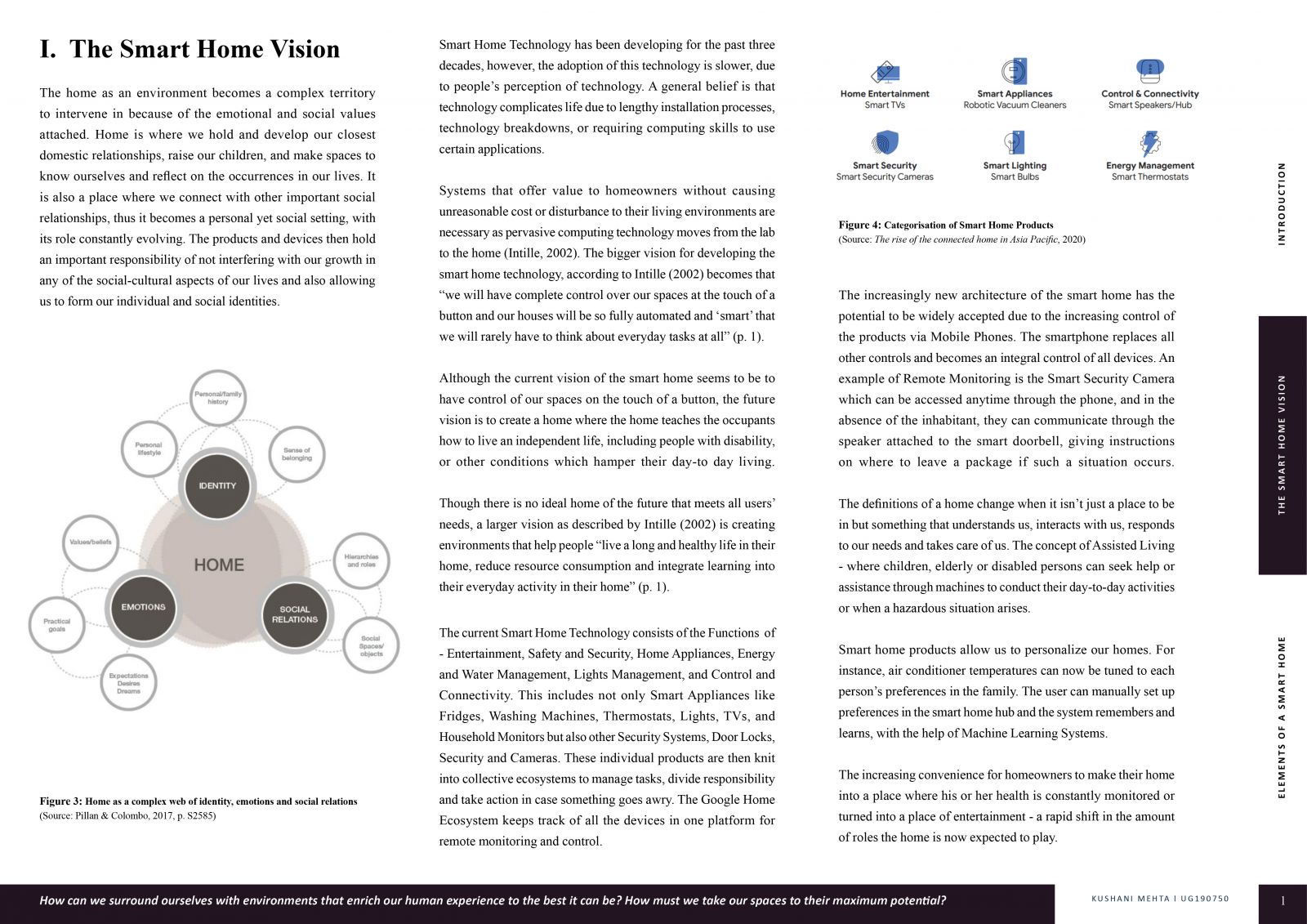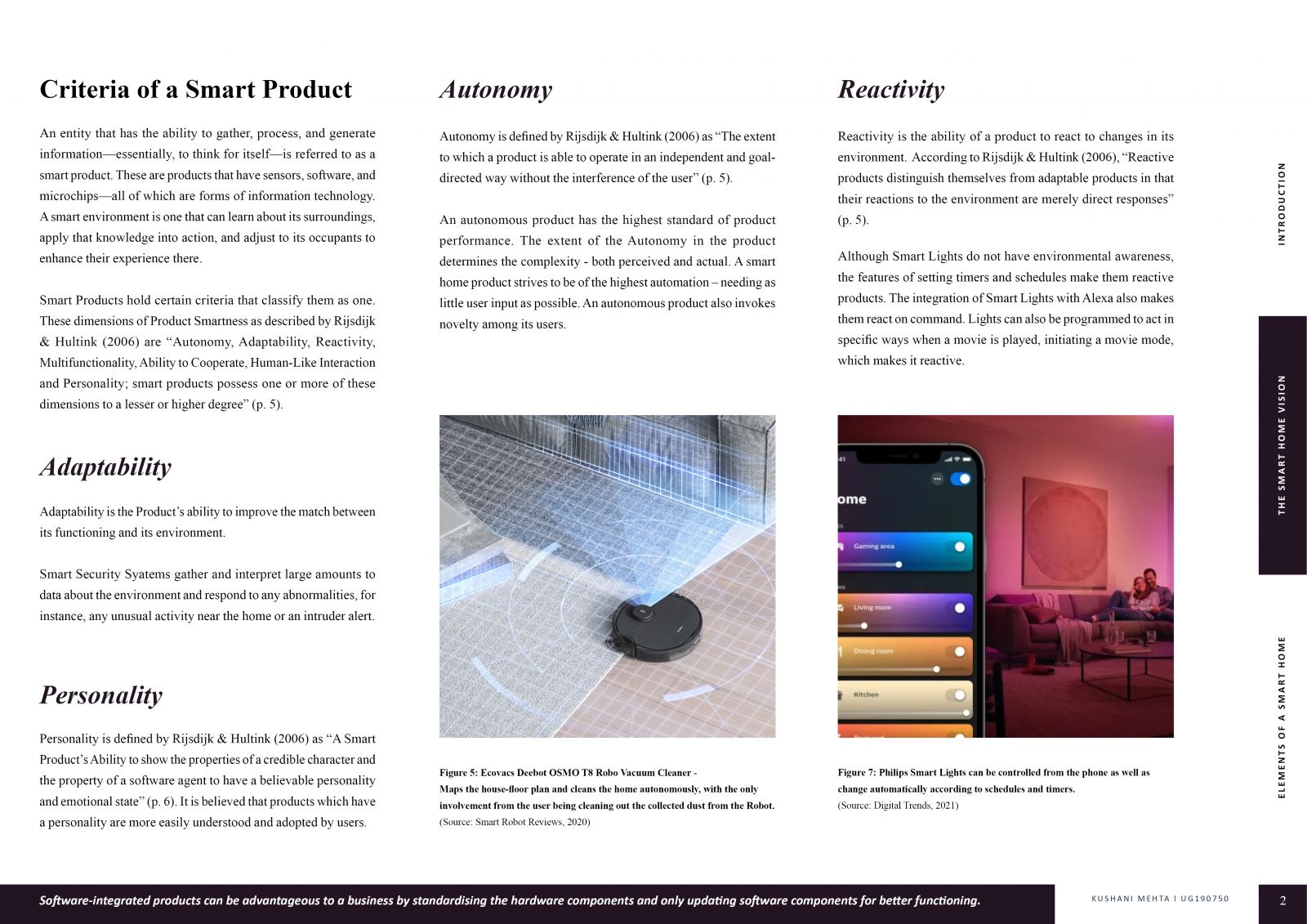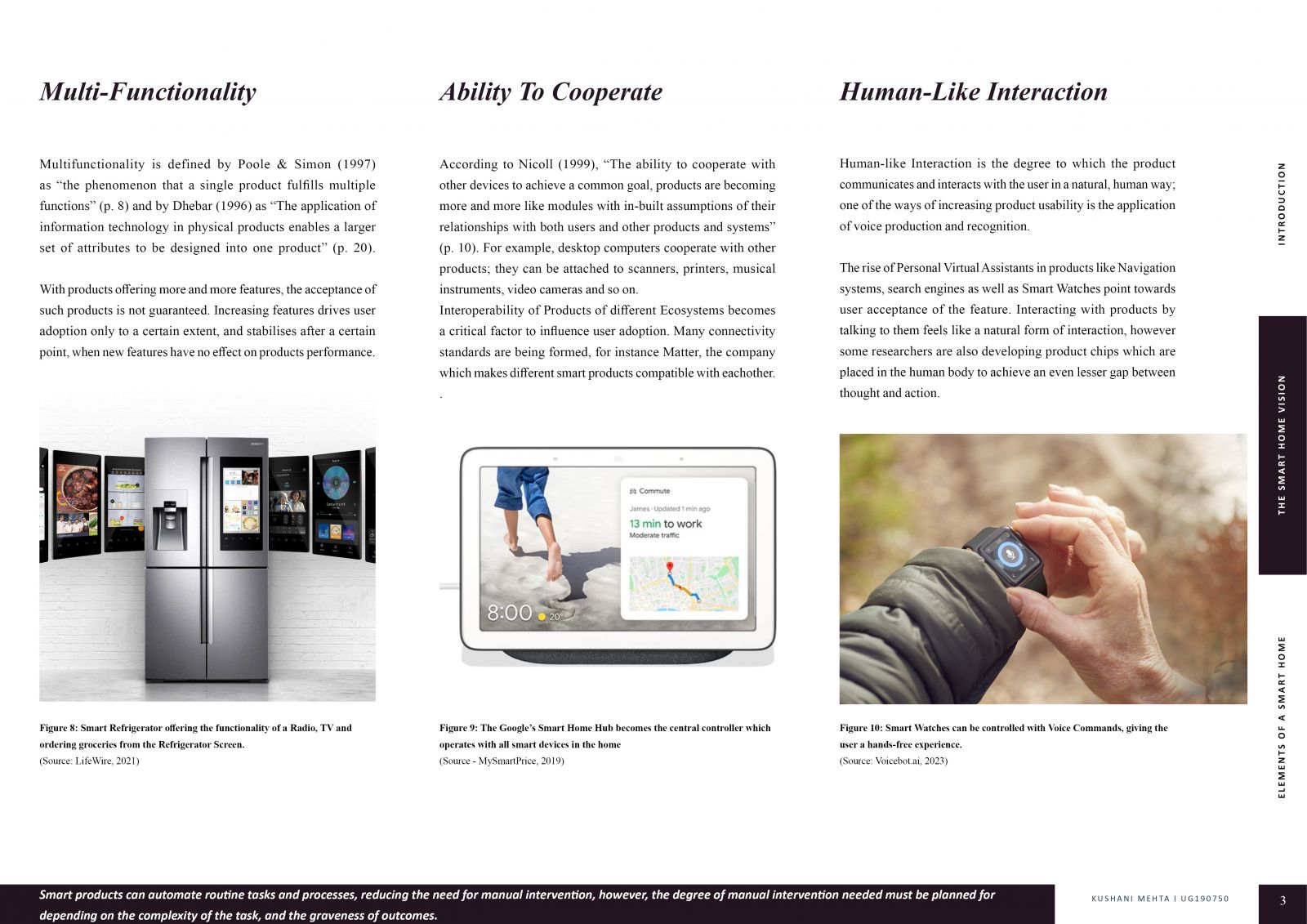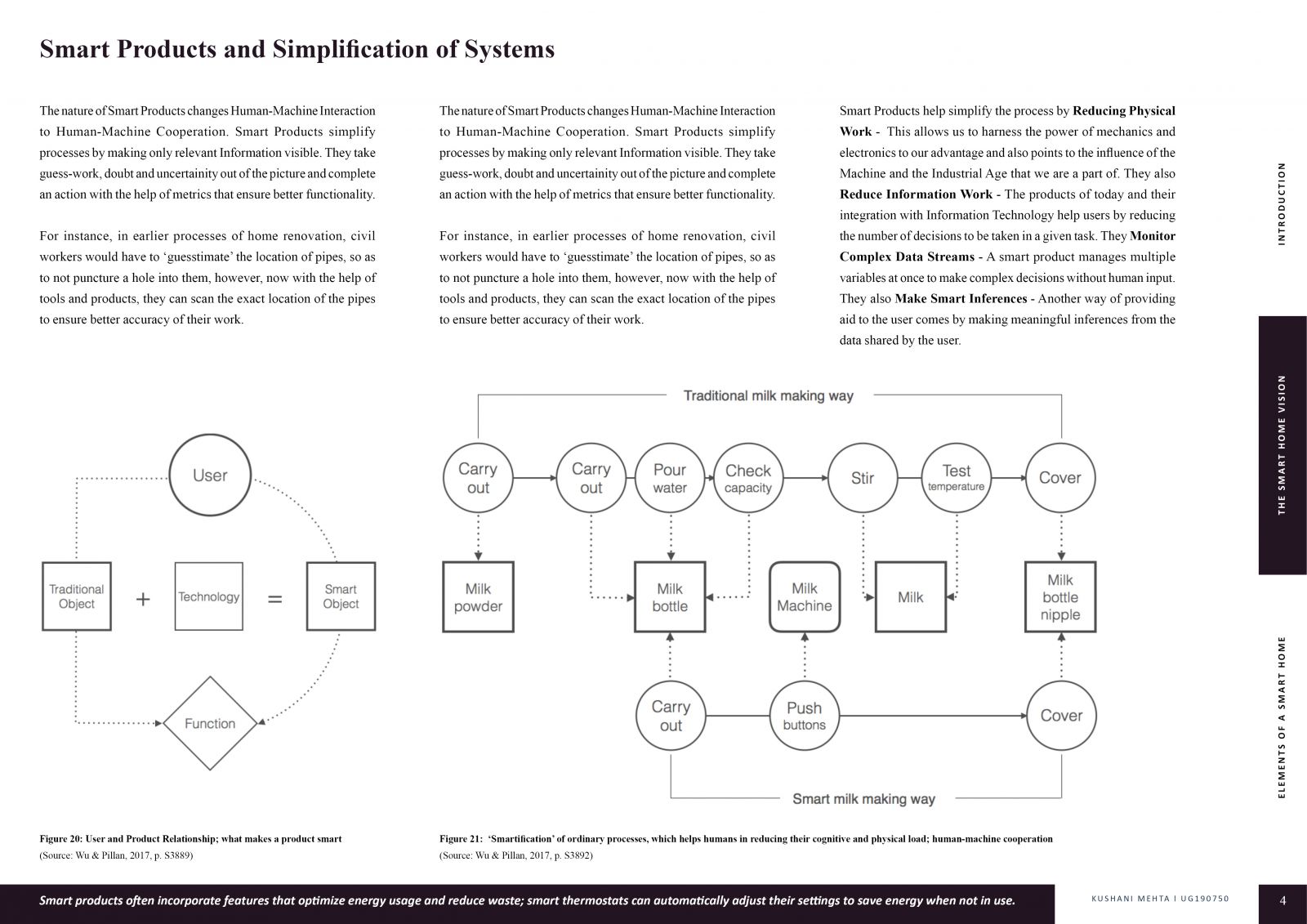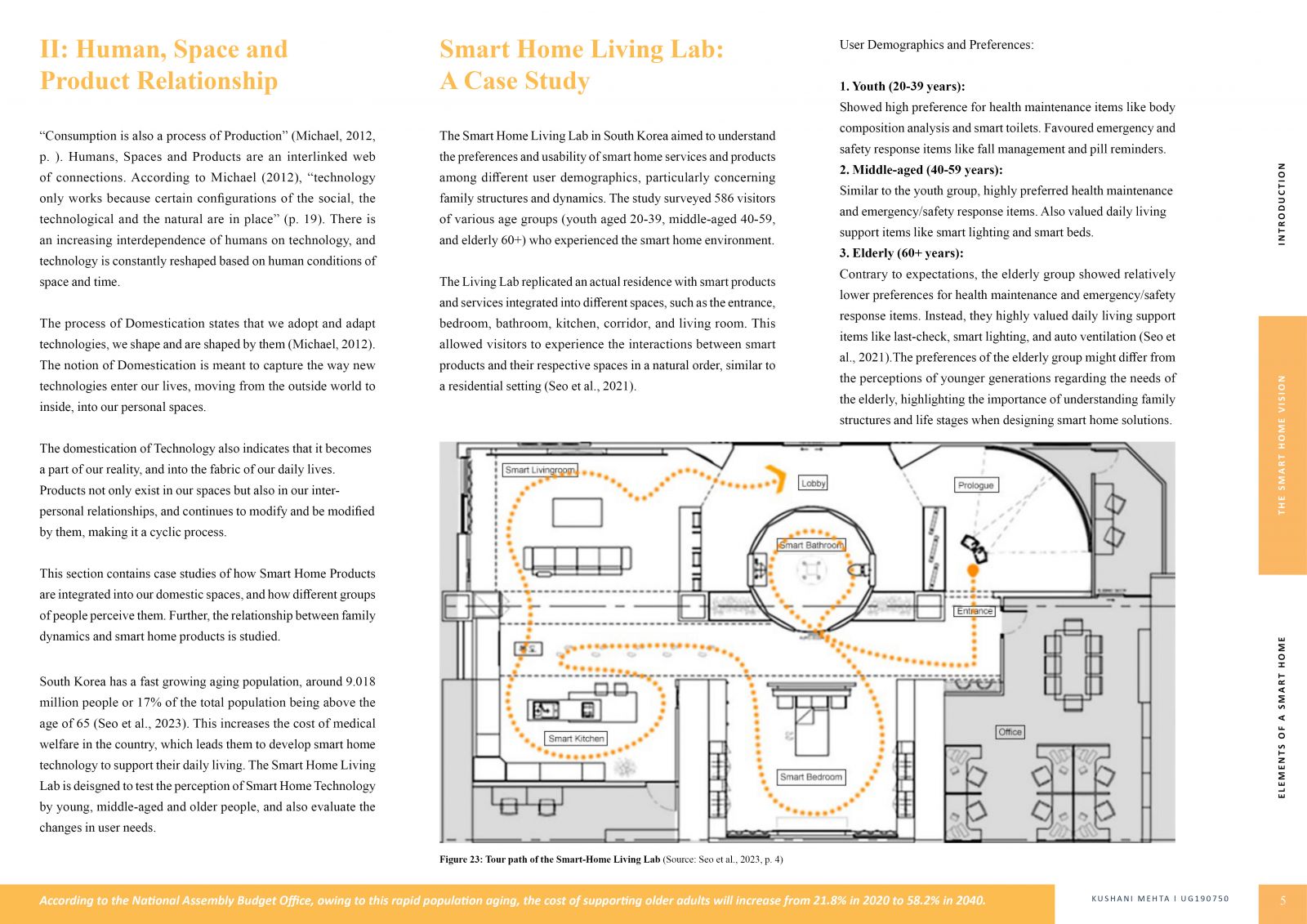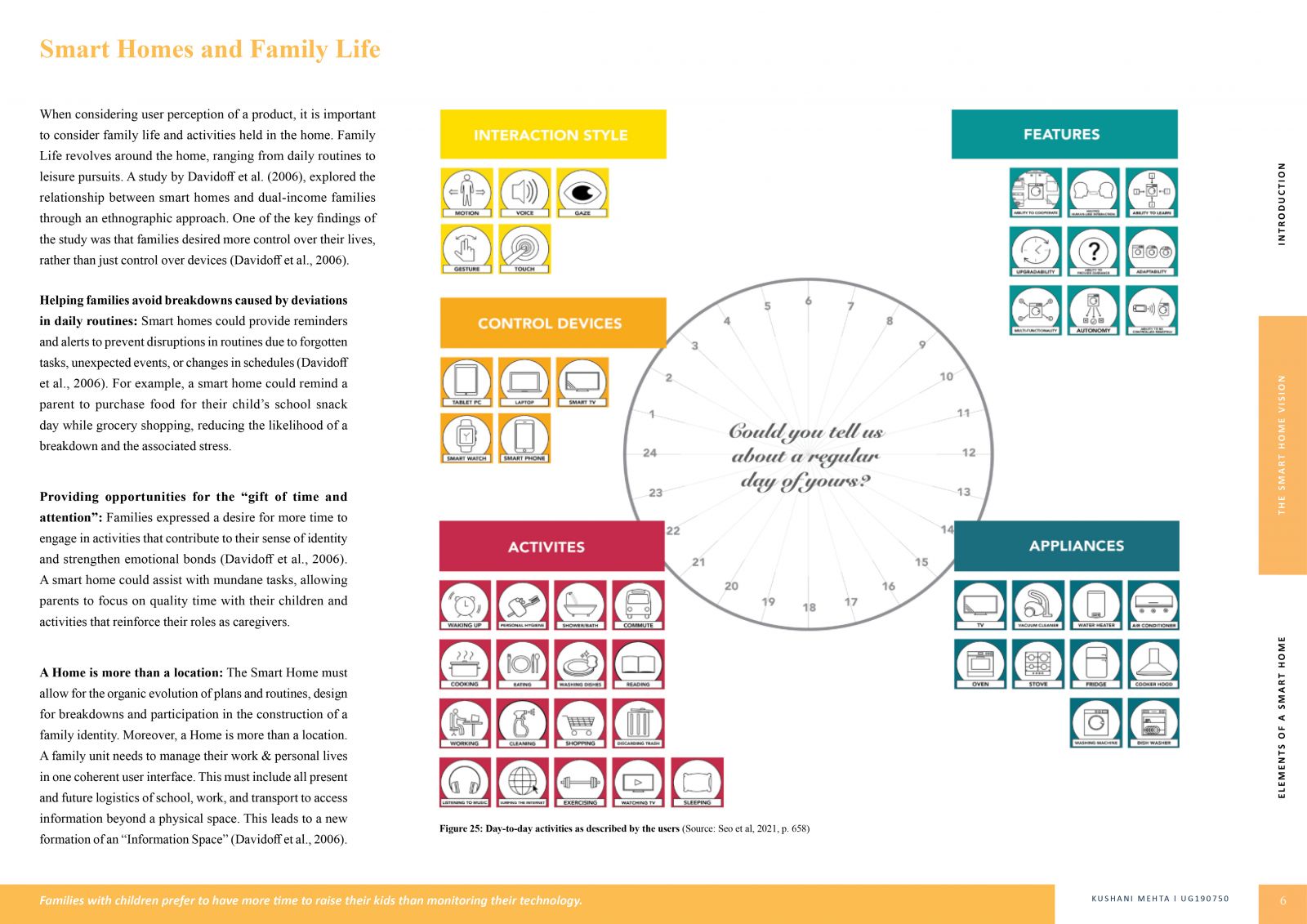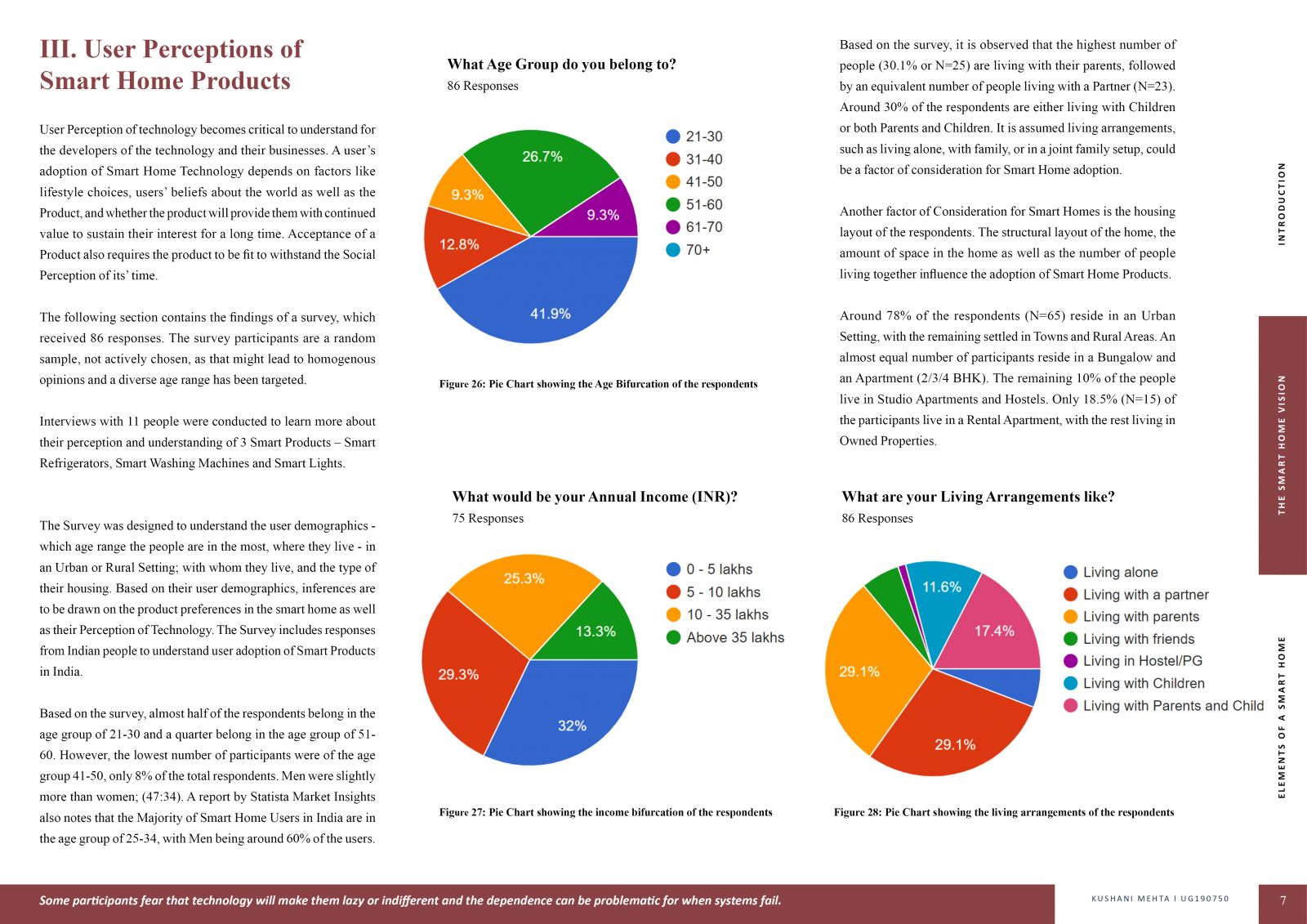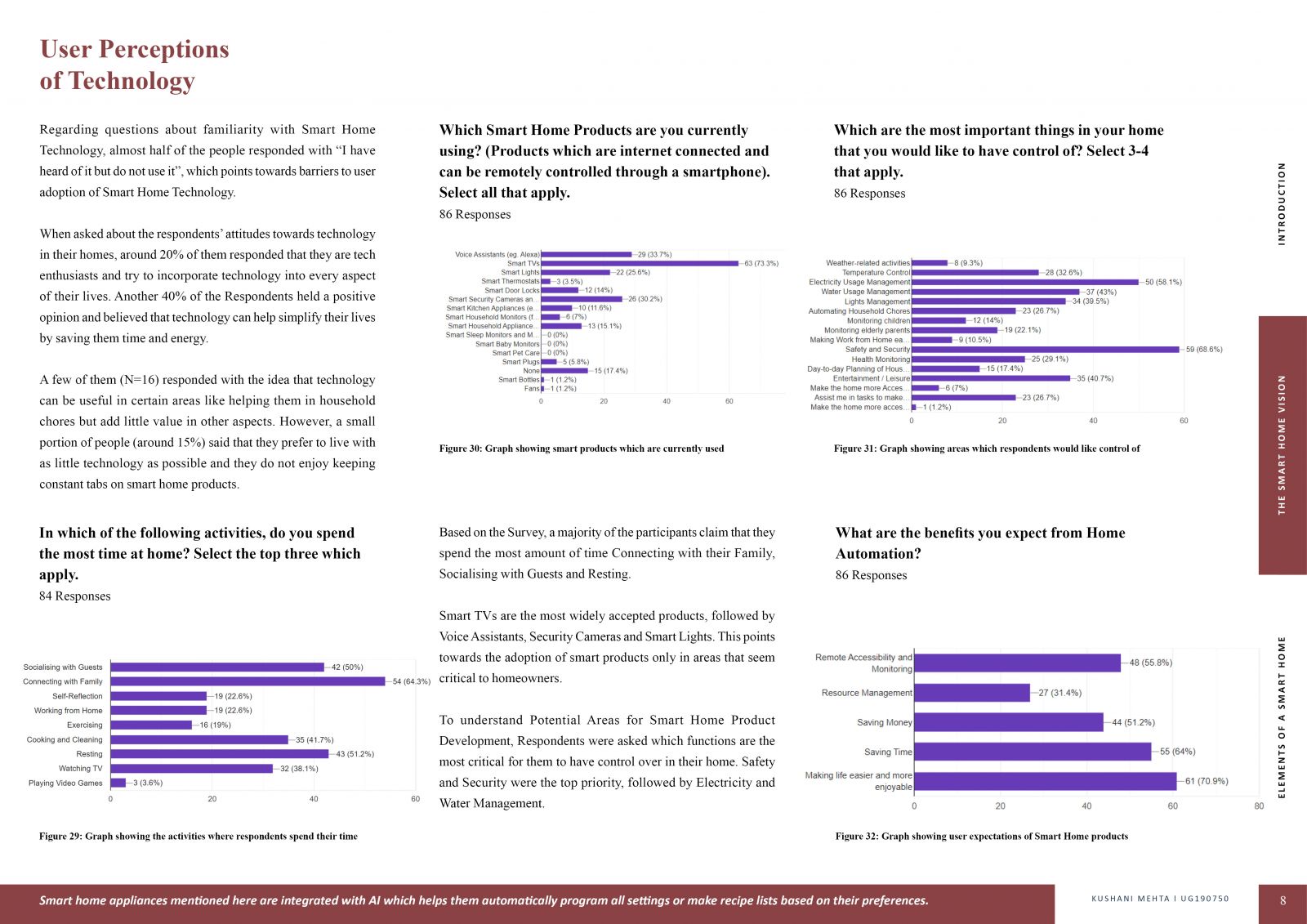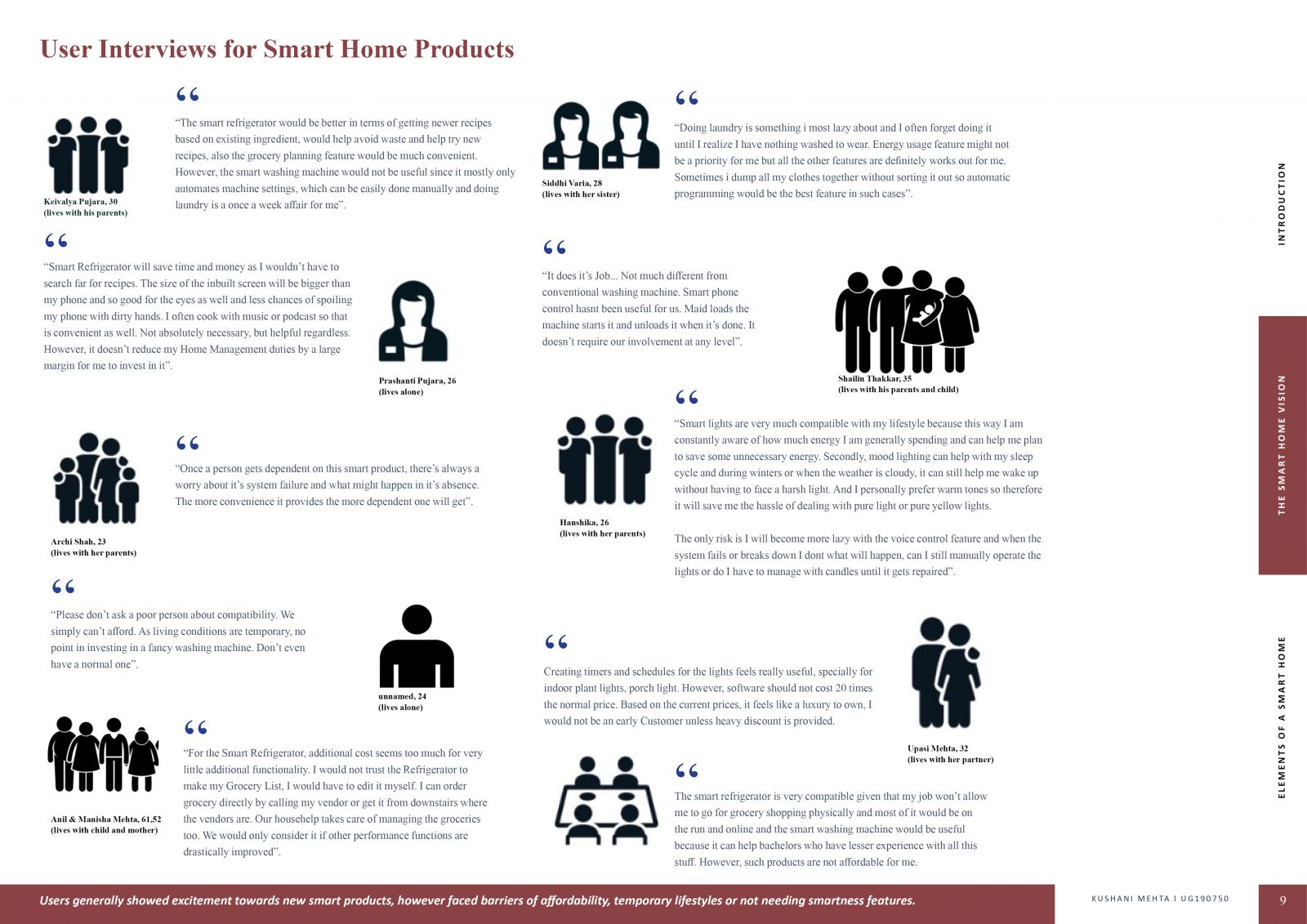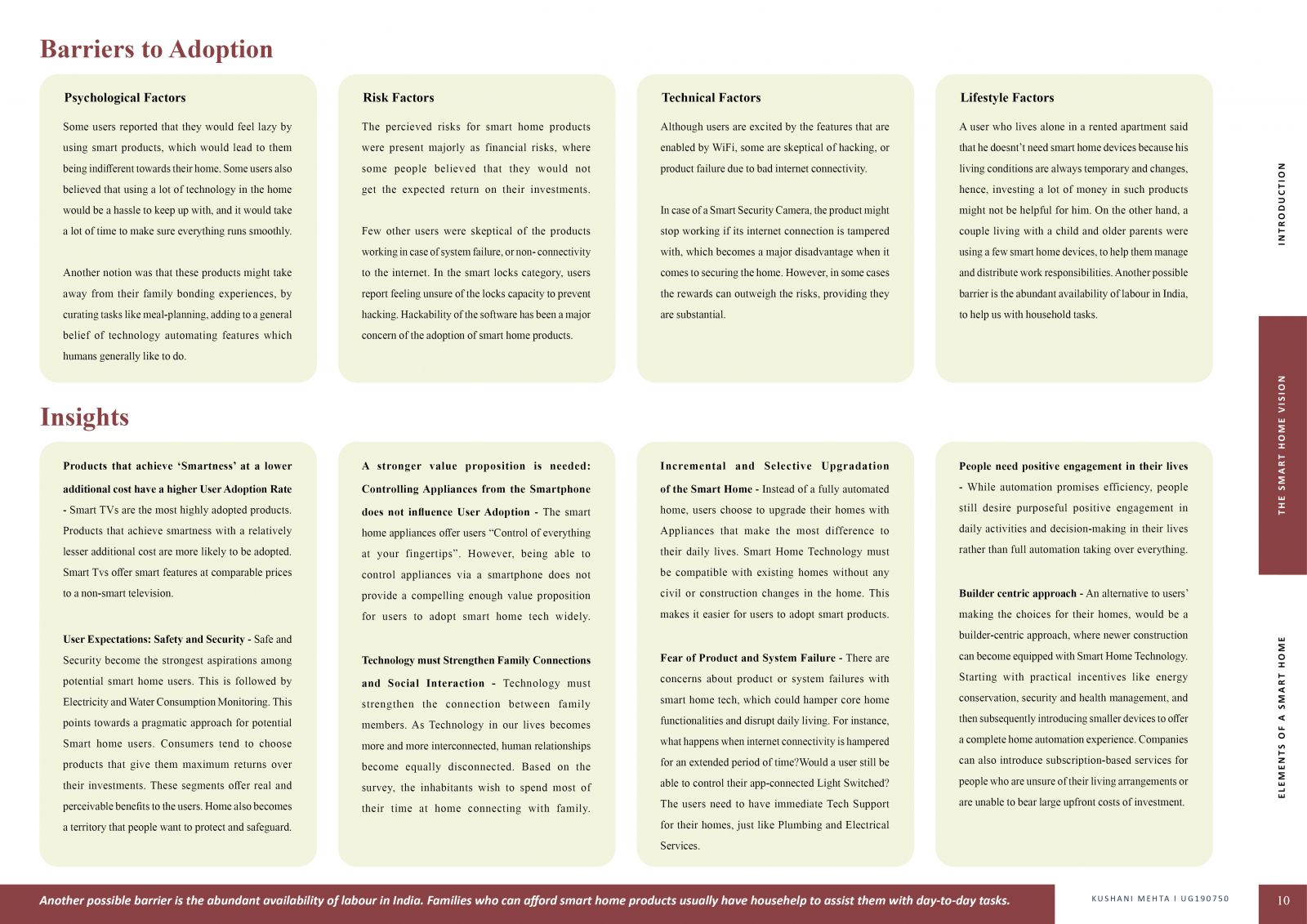Your browser is out-of-date!
For a richer surfing experience on our website, please update your browser. Update my browser now!
For a richer surfing experience on our website, please update your browser. Update my browser now!
Smart Home Automation is becoming increasingly common globally, due to the rise of information technology. The Digital Age is changing our perception of a home; from the traditional, simpler way of living to a hyper-connected world, where all devices are connected to the internet and can communicate with each other. The domain of Smart Home Technology has focused on improving technological aspects, but not enough attention is given to understanding Human needs for automation in a Domestic Context. The Smart Home development seeks a multi-disciplinary approach where decisions about the future of housing and domestic life are taken collectively. This paper aims to study the user perception of Smart Home Technology by understanding the human needs where smart intervention can help people simplify their lives and focus their attention on more important things. The study also aims to understand the barriers to Smart Home Technology Adoption in India. This will be synthesized to understand which products are easily adopted in the Indian Market and which user-centric factors can further increase the adoption of Smart Home Technology in India.
